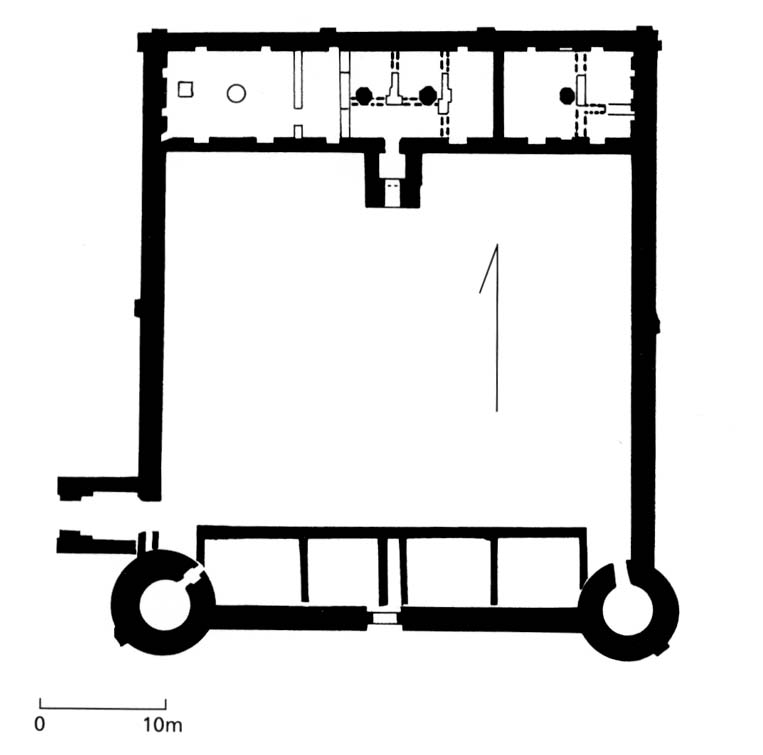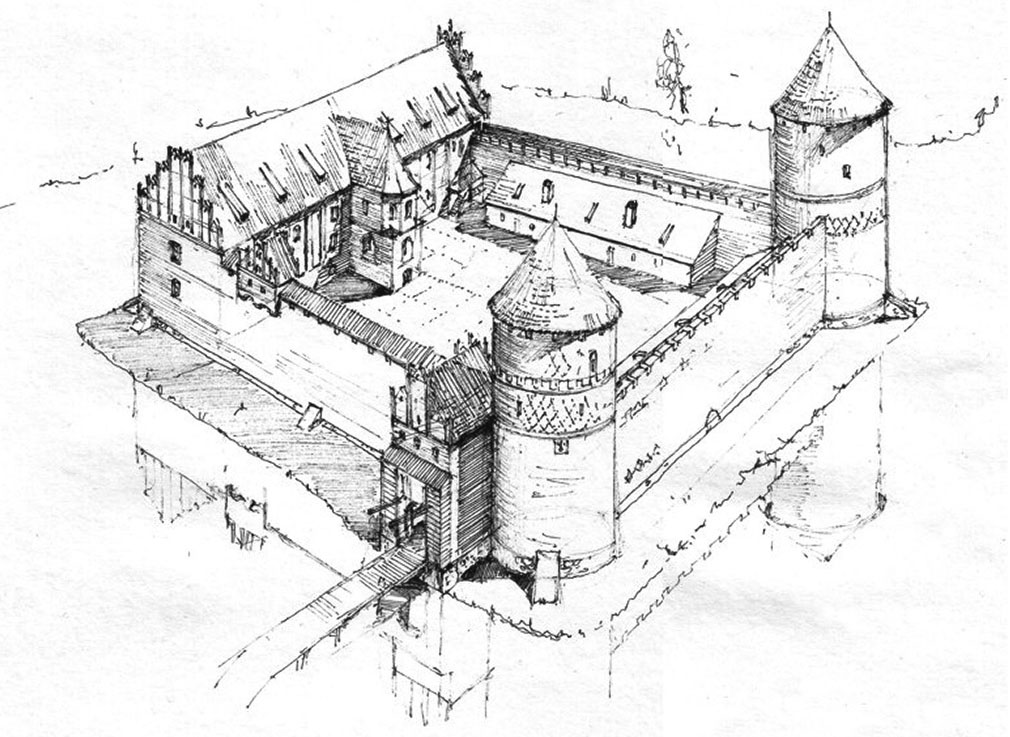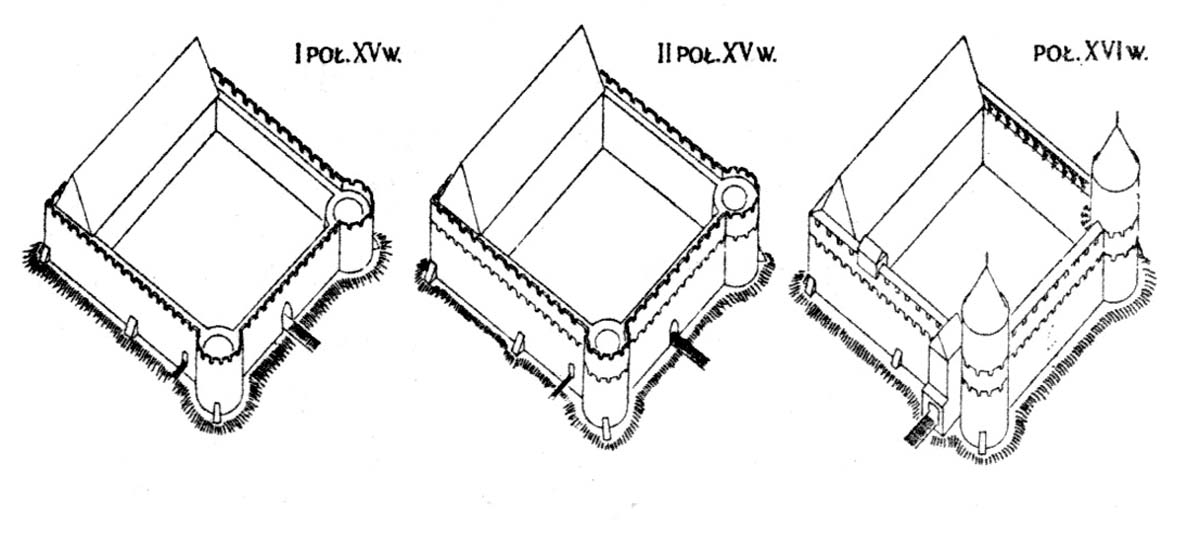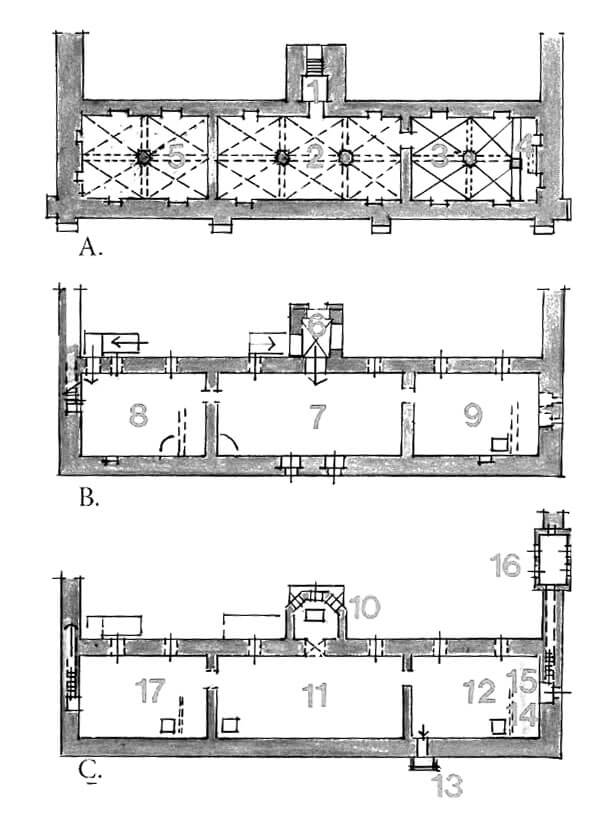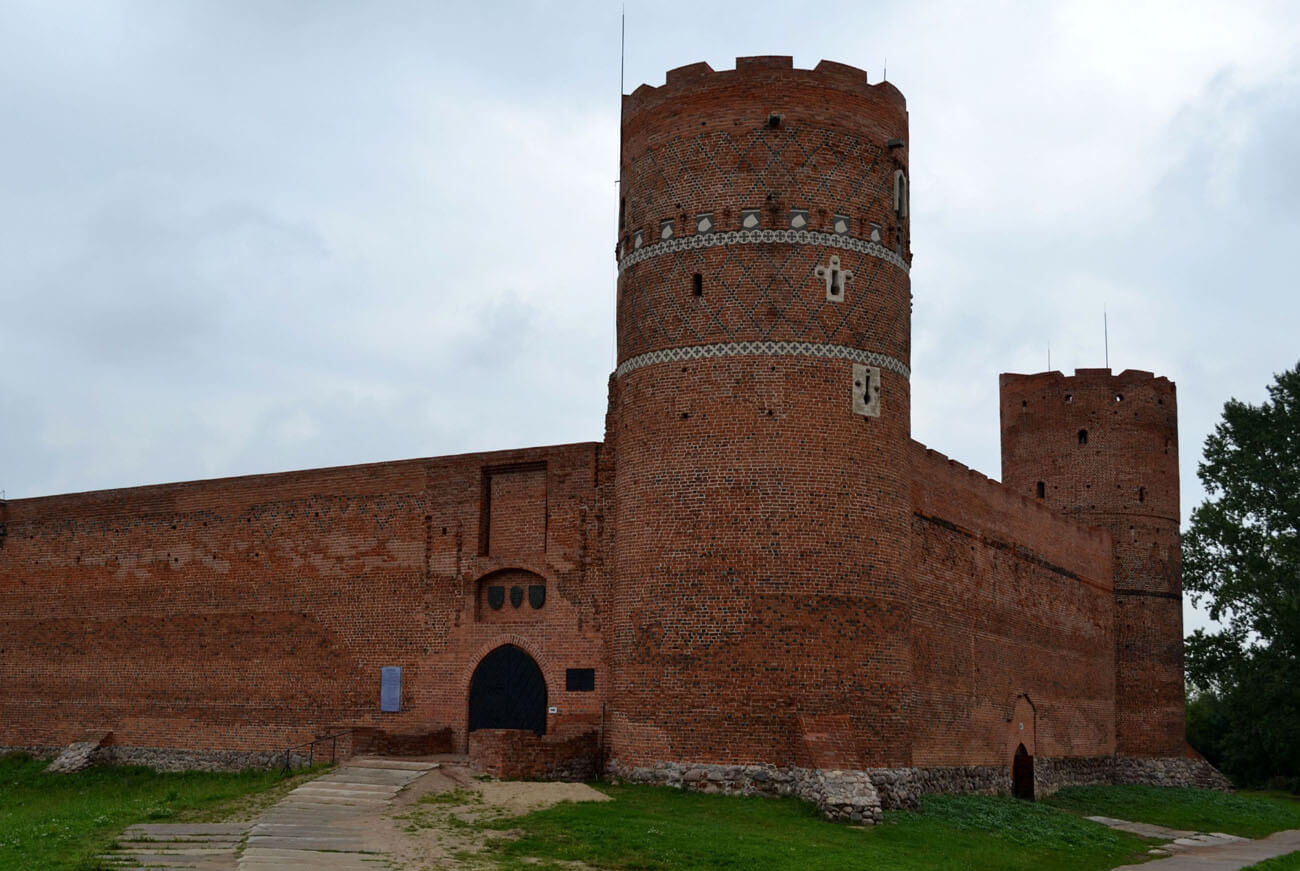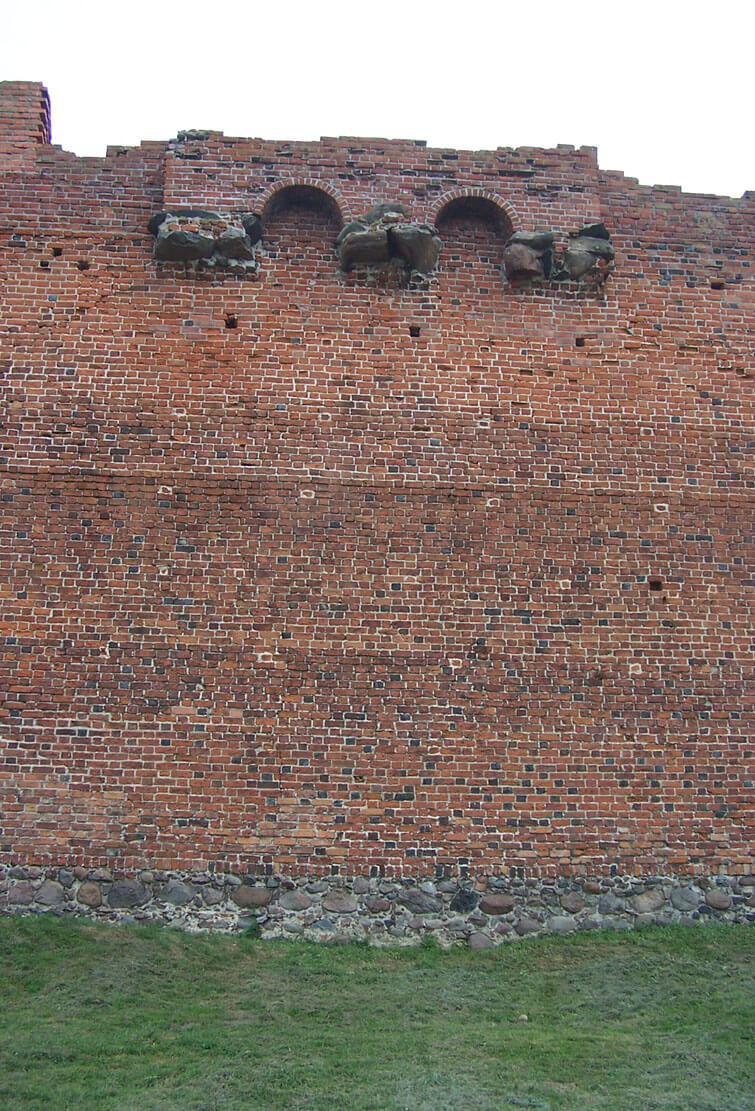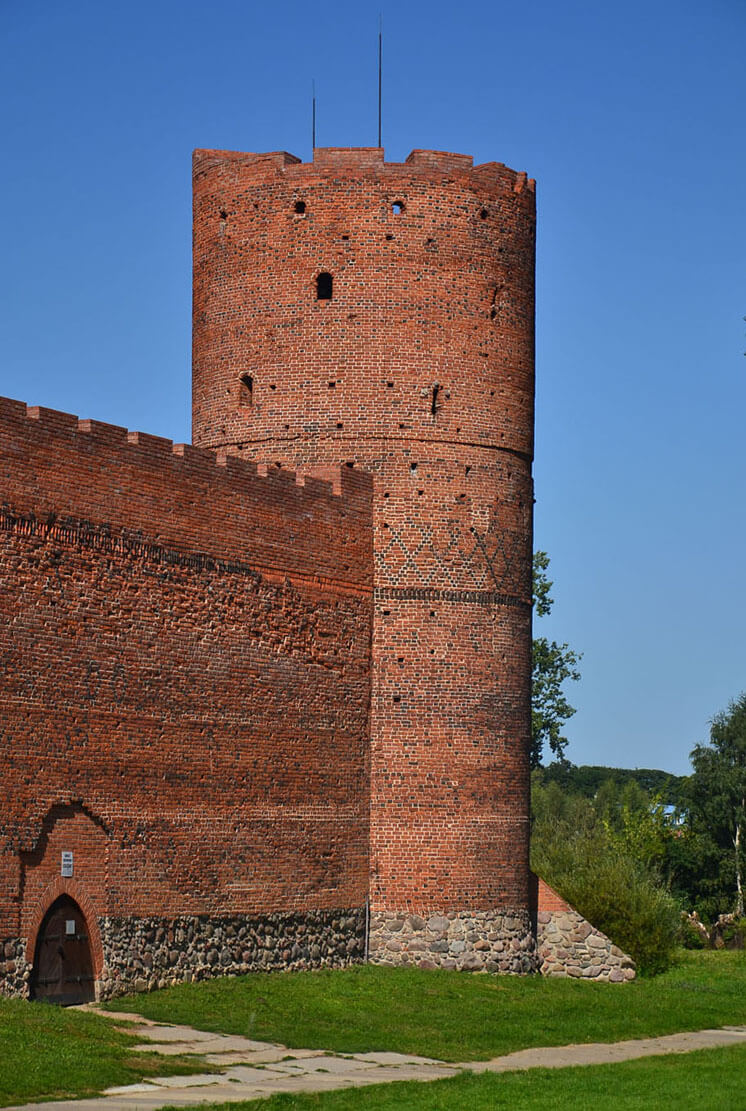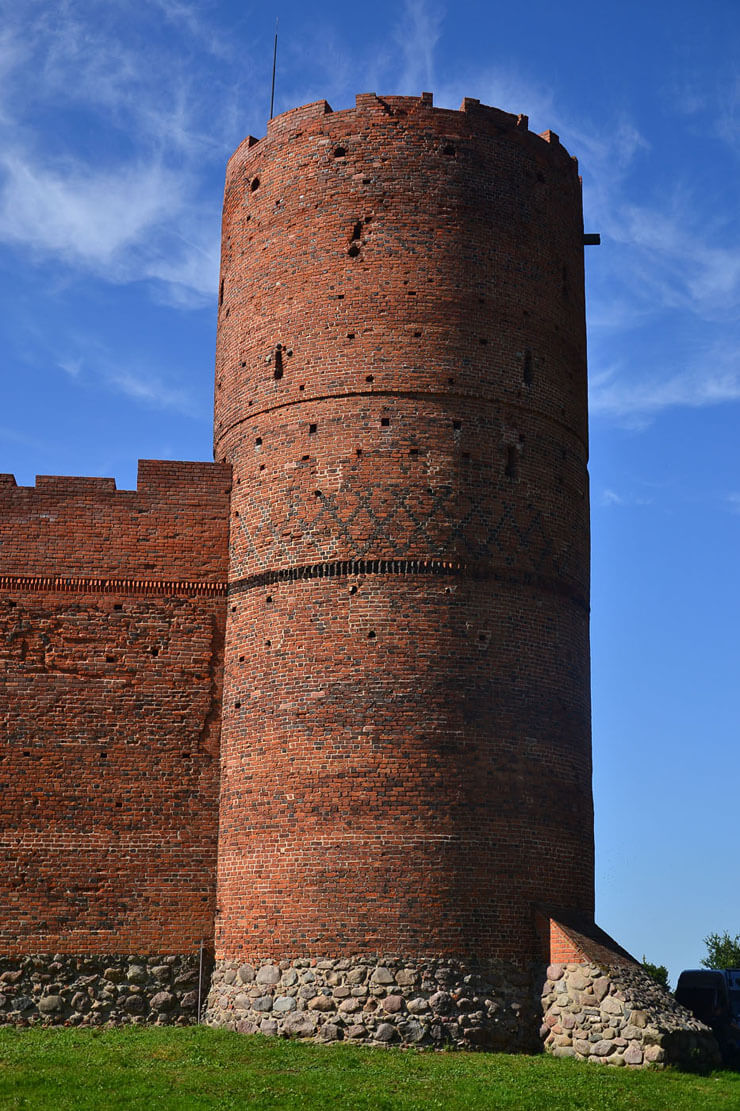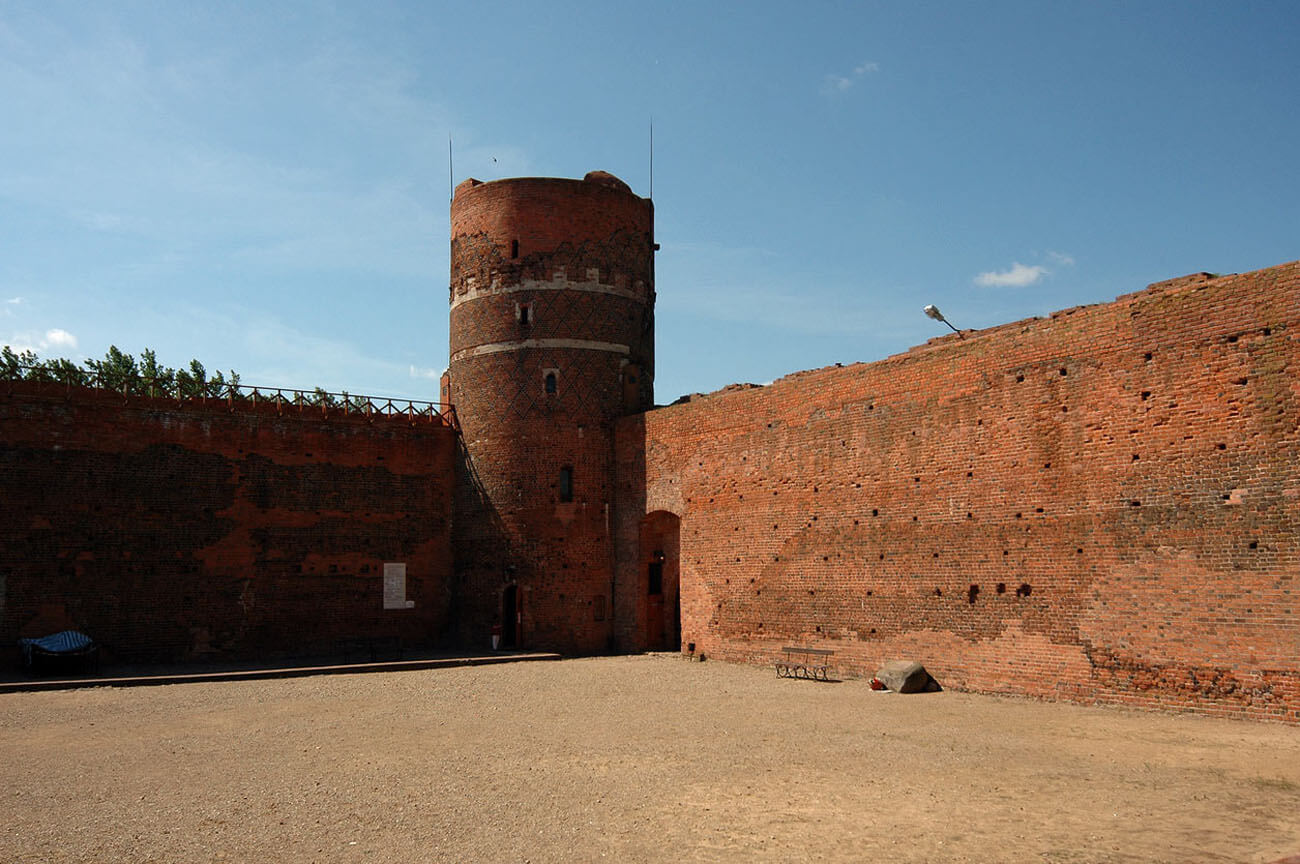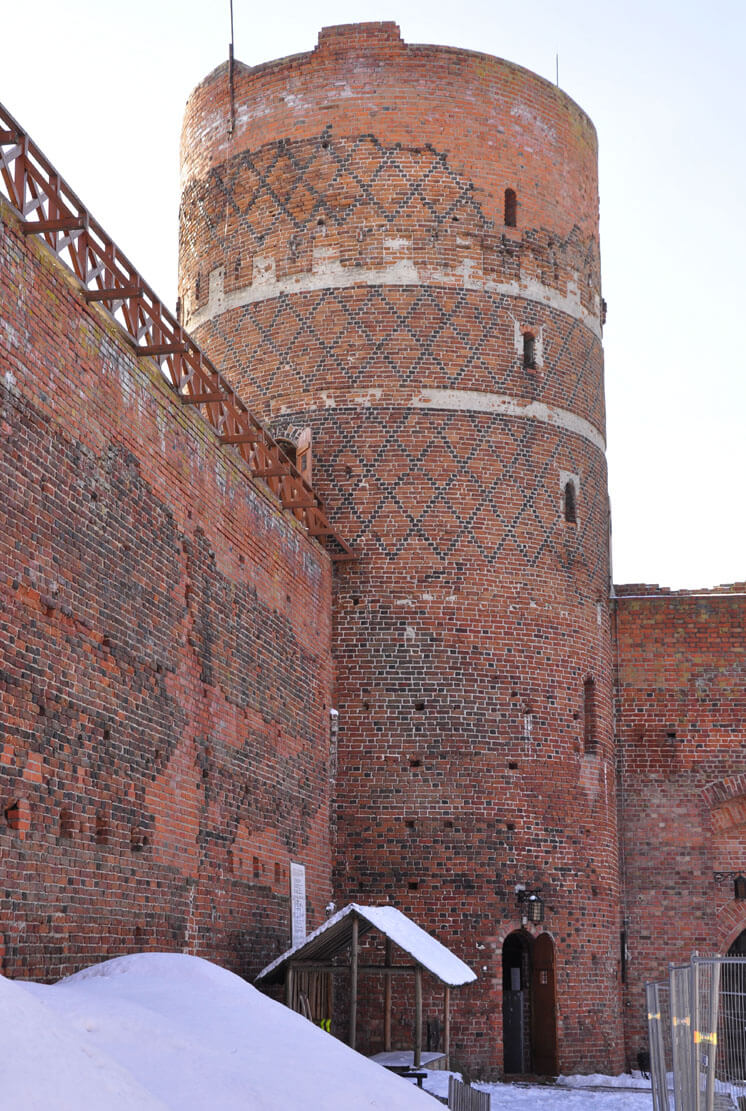History
The castle was built on empty place, probably in the 20s of the 15th century, because in 1429, master Niklos introduced building accounts to the prince of Mazovia Janusz I. After the fire in 1467, the castle was extended, among others, the towers were raised. After the incorporation of Mazovia into the Polish Crown in 1526, the castle was taken over by queen Bona and rebuilt after 1539. From the turn of the sixteenth and seventeenth century, the castle began to lose its importance, especially after being burned by the Swedes during the “deluge”. It was used until the end of the eighteenth century by the starosts, as the seat of the court and archives. After the fall of the Polish-Lithuanian Commonwealth in 1795, the Prussians dismantled the princely palace standing by the northern curtain of the walls.
Architecture
The castle was situated in the area of flood meadows and wetlands in one of the bends of the Łydynia River, which surrounded it from the north, east and south. To ensure that the protection was fully effective, the moat was additionally dug from the west, and the natural riverbed was deepened and strengthened with fascine. As the area was boggy, the builders had to create, from branches, gravels and shards of bricks, a low elevation of land on which the foundations of the castle were founded. They were made of granite erratic boulders, above which the rest of the structure was built of bricks.
The castle’s research has distinguished three stages of development. In the first, at the initiative of Janusz I, a regular, quadrilateral of 48×57 meters was created, consisting of perimeter walls, two cylindrical corner towers and the Great House (Curia Maior), that is a ducal palace of dimensions of 48×10 meters. In it, the inhabitants’ life was concentrated, there were representative, residential and economic rooms as well as a chapel. The building was initially single-storey, with three rooms on each floor and covered with a gable, steep roof. The corner towers protruded beyond the perimeter of the walls and initially had an equal to the walls height of 5 meters. In the south-eastern tower, the lower floor was assigned to a prison, and in the upper storey there was a courtroom. The original gate was opened on the south side, overlooking the town. The passage through the ogival portal enabled a wooden bridge, easy to dismantle in case of danger. On the west there was a smaller auxiliary wicket.
In the middle of the 15th century, due to the damming up of Sona and Łydynia waters for milling and fishing purposes, the groundwater level rose and the ground began to soak. For this reason, it was decided to raise the level of the original courtyard by about 1.5 meters (applying clay on it), and as a consequence, the perimeter walls and cylindrical towers were also raised and the palace floor was added. After the walls and towers were raised, they were about 10 meters high and were again crowned with battlement.
In the third phase, probably at the turn of the fifteenth and sixteenth century, it was decided to raise the defense of the castle again. For this purpose, the towers were once again raised and adapted to the use of firearms (by piercing key shooting holes). The old gate was removed from the south, and a new one was pierced in the western curtain. The new entry was preceded by a foregate and a wooden bridge. The Great House was also raised, and a string of brick buildings was added to the southern curtain – the so-called Small House, in which there was economic infrastructure, including a castle kitchen. Before 1536, the castle courtyard was paved.
Thanks to early modern lustrations, we know what was the layout of the Large House. To its façade from the side of the inner courtyard, a tower with an open, gothic loggia was added, to which led a side staircase from the courtyard. From the loggia, the entrance led on the high ground floor to the great hall with a stove (courtroom). On the eastern side was a banquet room with a stove and an additional entrance for service in the facade wall from the courtyard. In the western wall of the great hall there was a passage to the chamber which was probably originally a prince’s bedroom and later a room used as a pantry.
From the front of the tower, there was an entrance with a brick staircase down to the original ground floor (later a shallow basement), to a room covered with a gothic vault, supported by two central pillars. This room, together with the eastern, neighboring one, after locating the economic facilities in the Small House, could serve the prince’s knights. The original cellars were equipped with timber ground and fully topped with rib vaults (perhaps not realized in side rooms with single, central pillars). The walls inside the rooms were articulated with recesses according to the axes of the vaulted bays. The western hall of the cellars, after the liquidation of the connection with the entry hall, was accessible only from the prince’s chamber. It could be used to store wines.
On the third floor of the tower there was a chapel of St. Stanislaus, accessible from the upper, large entrance hall (also referred to as a painted hall). From it in the western wall there was a passage to the prince’s bedroom, equipped with a toilet and stove, a chamber, a prince’s treasury and stairs in the western wall leading to an apartment in Kurza Noga (bay window) and a timber staircase to the living rooms in the attic, equipped with a stoves and brick fireplaces. Behind the eastern wall of the painted room, the passage led through the room with an annex to the warmed by stove chamber, originally residential, and re-used as an arsenal with a small powder store. The passage of stairs in the thickness of the wall led from it to the east defensive porch of the walls. All rooms of the middle and upper brick floors of the Large House were covered with timber ceilings. For defensive reasons, the large windows of the representative chambers only had to be in the not preserved façade from the courtyard side.
Current state
The castle in Ciechanów is one of the best preserved Polish gothic brick castles. The sadder is the fact that since 2013 it has been disfigured by the insertion of a modern, glass and concrete building at the castle inner ward, which essentially destroyed the interior of the castle. We can say ‘thank you’ to the Museum of the Masovian Nobility and the local notables, who destroyed Polish cultural heritage with their small-town cravings. It remains to be hoped that in the future the manager of the castle will change, which will lead to the removal of the hideous pavilion. I recommend admiring the castle only from outside.
bibliography:
Architektura gotycka w Polsce, red. T. Mroczko, M. Arszyński, Warszawa 1995.
Kunkel R.M., Architektura gotycka na Mazowszu, Warszawa 2005.
Leksykon zamków w Polsce, red. L.Kajzer, Warszawa 2003.
Lewicka L.M., Konserwatorski problem rewaloryzacji zamku w Ciechanowie [w:] Ochrona zabytków architektury obronnej. Teoria a praktyka, red. M.L.Lewicka, Lublin – Warszawa 2008.
Wołosz A., Zamek w Ciechanowie, Ciechanów 1991.

